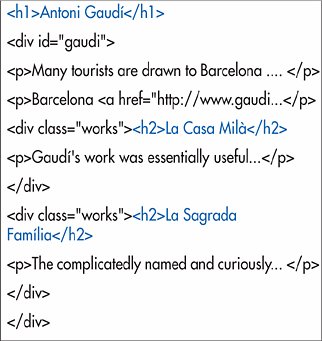Specifying Groups of Elements
| It's often necessary to apply the same style rules to more than one element. You can either reiterate the rules for each element, or you can combine selectors and apply the rules in one fell swoop. Figure 9.38. There is one h1 and two h2 elements. To apply styles to groups of elements:
|
EAN: 2147483647
Pages: 340

 Tips
Tips